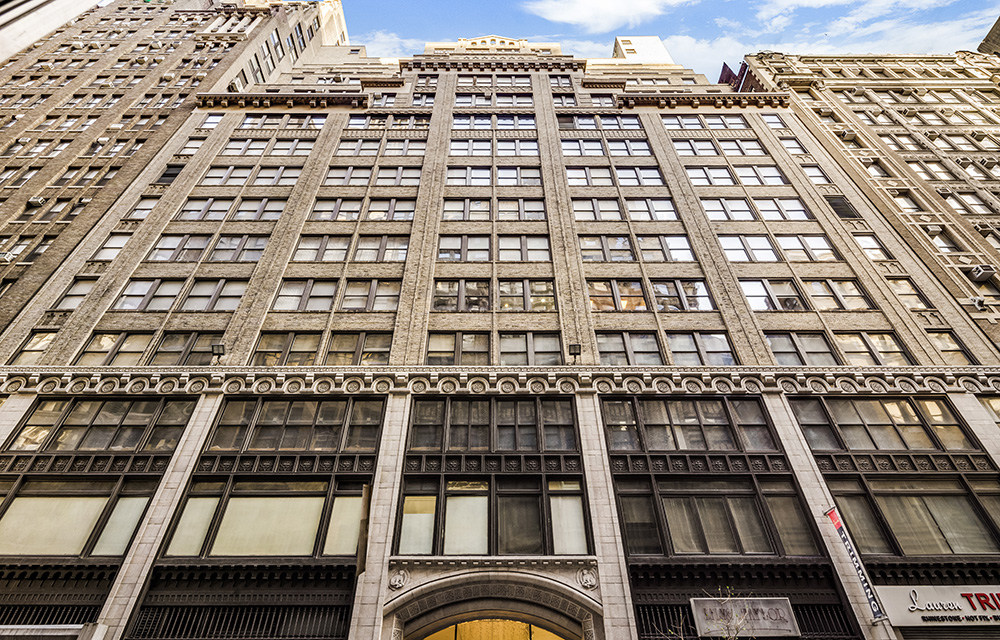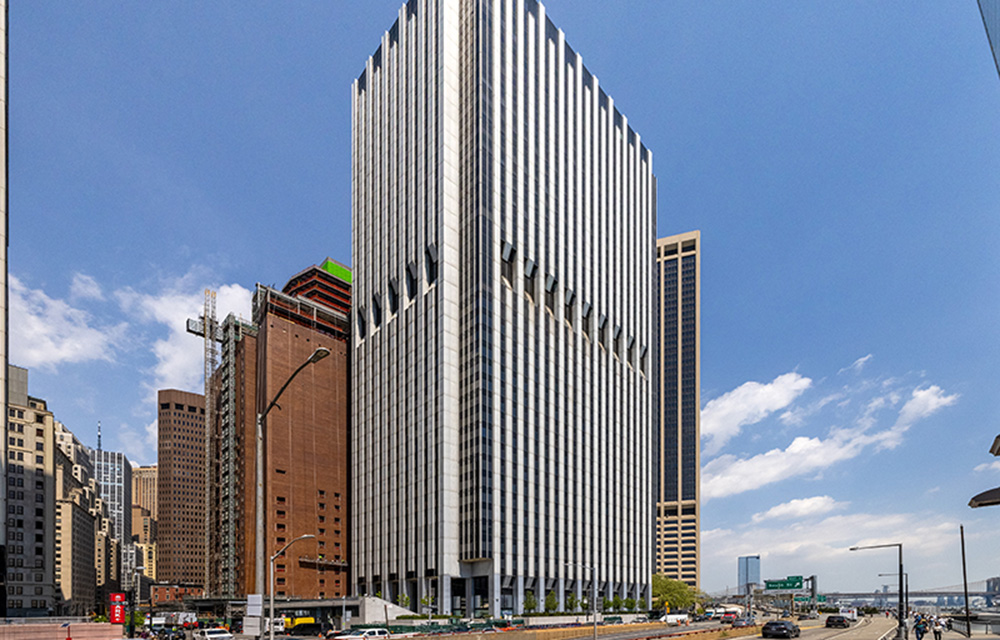New York Housing Stability and Protection Act of 2019 - by Robert Dremluk

Culhane Meadows, PLLC
On June 14th, 2019, the New York legislature enacted S.6458, the “Housing Stability and Tenant Protection Act of 2019,” after the bill passed the New York Assembly. This legislation is effective immediately and changes how approximately one million rent-regulated apartments in New York City and a substantial number of rent-stabilized tenants located in Nassau, Rockland and Westchester counties will be run. This groundbreaking legislation shifts power to tenants in a number of ways.
One of the statute’s justifications is that “[a]s has been extensively documented, New York State ranks only 39th in the nation for tenant protections. For tenants who rent market-rate units, this legislation would ensure they do not face unreasonable barriers to applying for and being offered leases; have more notice if a landlord wants to bring a court proceeding against them; allow more leniency throughout any eviction proceeding, including stays of eviction and executions of warrants; and ensure that any eviction that is executed is done so in the interest of justice.
Mobile and manufactured homes (MMH) are a critical component to solving the affordable housing crisis in upstate and rural communities across New York State. These provisions would implement sweeping changes to protect MMH owners who rent plots of land from a park owner or operator and MMH tenants wishing to rent to own a home already situated on a plot of land, to prevent displacement and park owner/operator abuses.”
What will be the impact of this legislation? The legislation is very favorable to tenants and although not addressing every concern raised by tenants, the legislation substantially covers many of their concerns. For example, the law does not require landlords to show “good cause” when a tenant is evicted. That said, these gains have occurred only after years of frustration and relentless efforts on behalf of tenants to create laws that protect tenants from unaffordable rent hikes or evictions. A reasonable argument can be made that these changes were long overdue.
On the other hand, the impact on landlords and the residential real estate market remains to be seen, but property owners almost uniformly express skepticism about the impact the new law will have on the quality and supply of housing going forward. This sentiment evidenced by a New York taxpayer group that asserts that the new law, “Will lead to disinvestment in the city’s private sector rental stock consigning hundreds of thousands of rent regulated tenants to living in buildings that are likely to fall into disrepair.” The implication of this statement is that one possible unintended consequence of the new law may be the creation of huge disparities between the quality of rental housing leading to a possible housing crisis if owners are disincentivized to acquire or improve residential properties.
To address this issue more finely, the impact on owners will be felt most acutely by investors that recently purchased properties with a view toward raising rents over time because of the repeal of the vacancy bonus. For those investors whose business plan relied on deregulating units quickly, that strategy may no longer be viable. Who benefits then? It has been argued that the new law may benefit more affluent tenants in below-market apartments and that small owners in working class neighborhoods will be hit the hardest. That said, even large owners are troubled about their investments or potential investments. In this regard, these large investors are rethinking investments that include an affordable housing component which conceivably could adversely impact the amount of affordable housing in New York City. Further, by reducing rent adjustments for MCI’s and IAI’s for existing owners makes it more difficult to make sensible investment in buildings.
Is this leading to a Tale of Two Cities? One where New Yorkers can choose to live in either a less expensive apartment in poor condition or a well-maintained market rent apartment. And if properties are not maintained what will be the impact on valuations and bank loans where the collateral securing the loan obligations is declining in value? Finally, what impact is occurring in the market that could provide some insights into some of these issues? Unfortunately, one report suggests that sales across all asset types in Manhattan fell 13% in sales volume and a 25% drop in the number of transactions. If sales continue to fall will this lead to downward pressure on property values? If so, where does the downward spiral stop? There are absolutely a lot of unanswered questions, but New York real estate owners are a creative bunch that presumably will find ways to survive and balance their interests with the new law that provides tenants with long awaited reforms.
Changes in Rent Regulation
For example, the legislation affects rent regulation in the following respects:
- Makes permanent the system of rent regulation in New York State and building conversions to cooperative or condominium ownership in the City of New York.
- Repeals vacancy bonus Increases, which allows automatic rent increases of up to 20% upon vacancy;
- Repeals Longevity Increases, which allows automatic rent increases based on the length of time since the last vacancy
- Prohibits a Rent Guidelines Board (RGB) from setting vacancy bonus rent increases and prohibits an RGB from setting longevity rent increases.
- Repeals High Rent Deregulation, which allows units to be removed from rent regulation upon vacancy after the rent achieves a high rent threshold; and Repeals High Income Deregulation provisions, which allows units to be removed from rent regulation if a tenant’s income is $200,000 or more for two consecutive years.
- Sets the Preferential Rent as the base rent for the duration of a tenancy, but preserves regulatory agreements that allow for legal rent increases.
- Allows HCR or a court of competent jurisdiction to look back at 6 years of rent history when determining rent overcharges, or a longer look back period if it is reasonably necessary to make a determination.
- Eliminates the ability of an owner to escape punitive damages where the overcharges were willful.
- Enacts the “Statewide Tenant Protection Act of 2019” to allow any city, town or village to opt-in to ETPA and provides the appointment of the members of the new RGBs to be done by the opting-in municipalities.
- Gives any municipality in the state the ability to opt-in to rent stabilization if they meet the requirement of a vacancy rate of less than 5 percent;
- Amends the maximum collectable rent increase formula that applies to Rent Control units to set annual increase at either an average of the last five years of RGB increases, or 7.5%, whichever is less; and prohibits Fuel Pass-Along charges for rent-controlled tenants.
- Reforms the personal use exclusion to limit the number of units an owner can take out of rent regulation, and requires the use to be an immediate and compelling necessity for use as a primary residence. and
- Ensures that units rented by nonprofits to provide housing to homeless or previously homeless people revert to rent regulation at the end of the use by the nonprofit, and that the previously homeless person or persons are treated as tenants for purposes of the law.
Changes in Ownership Rights
The legislation also affects ownership and maintenance of regulated residential real property as follows:
- Limits approvals to work for essential building functions and other improvements (e.g, heat, plumbing, windows, roofing); exclude maintenance.
- Limits spending to HCR schedule of reasonable costs for improvements.
- Prohibits approval where owner has hazardous violations on building.
- Adjusts the annual cap for MCI rent increases approved within the prior seven years for continuing tenant.
- Reduces the impact of Major Capital Improvements (MCIs)—charges relating to building-wide capital projects—by limiting the maximum annual rent increases to 2 percent (from 6 percent in the city and 15 percent in other counties), requiring more audits of MCIs and limiting the time over which landlords can charge MCIs from permanent to 30 years;
- Limits the dollar amount that landlords can claim in individual apartment improvements, and restrict the duration of related rent increases to 30 years
- Provides that associated rent increases may only be prospective.
- Requires HCR to audit and inspect work on a minimum of 25% of approved MCIs annually.
- Reduces rent increases paid by tenants and makes increases temporary:
- Allows amortization for 12 years for buildings of 35 units or less; 12.5 years for other buildings;
- Caps Rent Increases at 2% annually;
- Provides that rent surcharges would expire in 30 years;
- Reforms Individual Apartment Improvements (IAIs) to limit rent increases to substantial modifications (i) up to 3 times in any 15 years, for up to $15,000; (ii) amortizes improvement cost over 14 years for smaller buildings of 35 units or less and 15 years for all other larger buildings; and, provides that surcharges expire in 30 years.
- Limits exemptions from the stabilization system for apartments set aside for landlords’ own use or units used by nonprofits to house the homeless; and
- Buffers rent increases in the separate, smaller system of rent-controlled apartments by linking “maximum collectible rent” increases to recent increases in stabilized rents.
Reporting Requirement
There is a reporting requirement that requires the Division of Home and Community Renewal (HCR) to conduct an annual report on rent regulation that would be due on Dec. 31 of each year and be made publicly available.
Tenant Protections
Tenant protections include the following:
- Strengthens tenant protections against retaliatory evictions.
- Requires written notice before increasing the rent or refusing to renew a lease.
- Requires a landlord to, in good faith and according to their resources and abilities, take reasonable and customary steps to re-rent a unit if the tenant vacates before the end of the lease term.
- Bans the use of “tenant blacklists” and protects a tenant’s ability to fight for their rights in housing court.
- Conforms existing notice requirements for month- to-month tenancies to the notice requirement created under the statute
- Prohibits landlords from recovering attorneys’ fees when the tenant does not contest the eviction and the landlord wins a default judgment.
- Provides more robust record-keeping when tenants pay with cash and requires notice if the landlord does not receive payment within five days of the due date.
- Prohibits landlords from charging application fees, except the actual cost of background checks and credit checks, and limits late fees to $50 or 5% of the monthly rent, whichever is less.
- Defines “rent” for the purposes of eviction proceedings to exclude extraneous fees and charges to protect tenants from eviction due to failure to pay fees.
- Requires a written demand for rent with 14 days’ notice before beginning an eviction proceeding for non-payment of rent.
- Allows a tenant to pay the full amount of rent due before the hearing on an eviction petition and avoid eviction.
- Provides an additional five days for tenants to respond to petitions for eviction.
- Allows the tenant to answer the petition at the hearing, rather than providing an answer three days before the hearing.
- Provides tenants with at least one adjournment of an eviction proceeding of at least 14 days, as of right, and it reforms the requirements for payment of use and occupancy in New York City Housing Court.
- Repeals section 747-a of the Real Property Actions and Proceedings Law.
- Provides tenants with at least 14 days’ notice before the execution of an eviction warrant and requires additional information on the warrant. If the eviction was for non-payment of rent, it also allows the tenant to pay the full amount of rent due before the execution of the warrant and avoid eviction, unless the tenant withheld the rent in bad faith.
- Repeals an expired subdivision of the Real Property Actions and Proceedings Law.
- Allows judges to issue a stay of eviction for up to one year where the tenant cannot find suitable housing in the same neighborhood or the eviction would cause extreme hardship. It also provides an automatic 30 day stay of eviction where the eviction is based on breach of a provision of the lease to allow the tenant an opportunity to cure the breach.
- Expands the requirement that a court stay eviction proceedings if utilities have been cut off to the building due to the landlord’s failure to pay for utilities. Currently, this only applies to multiple dwellings, but this section makes it apply to all dwellings.
- Requires the court to seal an eviction if it was the result of a foreclosure of the building and the tenant was not at fault.
- Creates the crime of unlawful eviction punishable by civil penalties between $1,000 and $10,000 per violation.
- Increases the ability of tenants to challenge rents by allowing a six-year (rather than four-year) look back at rent history and increasing owner liability for overcharge claims from two to six years;
- Limits security deposits to one month’s rent and requires the return of the deposit within 14 days of the end of occupancy with an itemized statement for any portion of the deposit withheld.
- Prohibits the Office of Court Administration from selling housing court data to third parties.
- Creates the New York State Temporary Commission on Housing Security and Tenant Protection, which will study the impacts of the bill and issue a report recommending future legislation by December31, 2022.
Condominium and Cooperative Apartments
The legislation also affects condominium and cooperative apartment conversions as follows:
- Repeals eviction plan conversions, limits non-eviction plan conversions of rent regulated buildings to preserve the rental housing stock, and provides additional protections for senior citizens and disabled tenants in buildings seeking a non-eviction plan conversion.
- Makes permanent the system of rent regulation in New York State and building conversions to cooperative or condominium ownership in the City of New York.
Mobile and Manufactured Homes
And finally, the legislation addresses the rights of mobile and manufactured home tenants as follows:
Establishes rent-to-own protections;
- Requires a homeowner rights rider to leases;
- Requires a stipend to be paid to homeowners evicted for the conversion of the use of the park parcels the home is situated on and 2 years notice of the change of use;
- Provides stronger protections against evictions; and,
- Limits rent increases to 3% with the ability of tenants to challenge in court any higher increases.
Robert Dremluk is a partner at Culhane Meadows, PLLC, New York, N.Y.
Meridian Capital Group arranges 10-year retail lease for Mess at 236 West 10th St.


AI comes to public relations, but be cautious, experts say - by Harry Zlokower

Strategic pause - by Shallini Mehra and Chirag Doshi

Behind the post: Why reels, stories, and shorts work for CRE (and how to use them) - by Kimberly Zar Bloorian









.jpg)

.gif)